Frederic Seymour "Feg" Murray did not set out to become Hollywood’s most athletic gossip columnist. Born in Palo Alto in 1894, the son of a Stanford professor, he first made a name for himself as a track star—captain of Stanford’s team, national champion hurdler, World War I veteran, and Olympic bronze medalist at the 1920 Games in Antwerp. But it was his side talent—cartooning—that carried him into the heart of the American imagination.
After the war, Murray turned to illustration, selling sports cartoons to major newspapers and quietly building a national audience. It wasn’t until a return trip to California in 1932 to cover the Los Angeles Olympics that he noticed what readers really wanted: not just who crossed the finish line first, but what Clark Gable was like offscreen. Hollywood was no longer just a local industry—it was the national dream machine—and America was desperate for glimpses behind the curtain.
Murray gave it to them. In 1933, he launched Seein’ Stars, a daily illustrated column that stitched together movie star trivia, career updates, and lightly gossipy tidbits, all delivered in his clean, realistic linework very reminiscent in style to Ripley’s Believe It or Not! Each installment featured portraits of the stars, amusing facts (some truer than others), and Murray’s trademark tiny cartoon bear often delivering a snappy aside from the margins.
Arriving at the peak of the studio system, Seein’ Stars offered a safe but irresistible backstage pass to celebrity life. Studio publicity departments kept tight control over their stars' images, and fan magazines obediently printed whatever narrative was handed to them. Murray’s column, while never truly subversive, added just enough casual charm and novelty to humanize the faces on the silver screen. In Depression-era America, where fantasy was an affordable luxury, Seein’ Stars was a small but sparkling escape.
The column ran for nearly two decades—black-and-white weekdays, full color on Sundays—and at its peak reached millions of readers through King Features Syndicate. Murray even became a minor celebrity himself, hosting a season of The Baker’s Broadcast on NBC Radio in 1938, though he remained far more comfortable behind the drawing board than behind a microphone.
By 1951, with the golden age of Hollywood fading and television changing the landscape, Seein’ Stars quietly ended. Feg retired a few years later to Carmel Valley, where he lived until his death in 1973.
Today, Feg Murray’s Seein’ Stars stands as a charming relic from an era when celebrity gossip was still delivered with a wink and a sketch—when stars remained luminous partly because artists like Feg Murray knew how to keep just enough mystery alive.
Below is a selection of 1933 editions of Seein’ Stars I hope you enjoy some of the fin tidbits of celebrity trivia and light gossip!
and finally. . .
Cinema Cities and the Screen Spectator is a one woman show written, produced, edited, researched, designed all by me, Sydney. If you’re loving this content please consider supporting Cinema Cities and The Screen Spectator by becoming a paid member of this substack (you get cool extra stuff) or clicking here and joining my Patreon⭐️ (same cool extra stuff as the paid substack)
You can find a list of essential Cinema Cities books and movies here: Cinema Cities Favorites
Email: CinemaCities1978@gmail.com





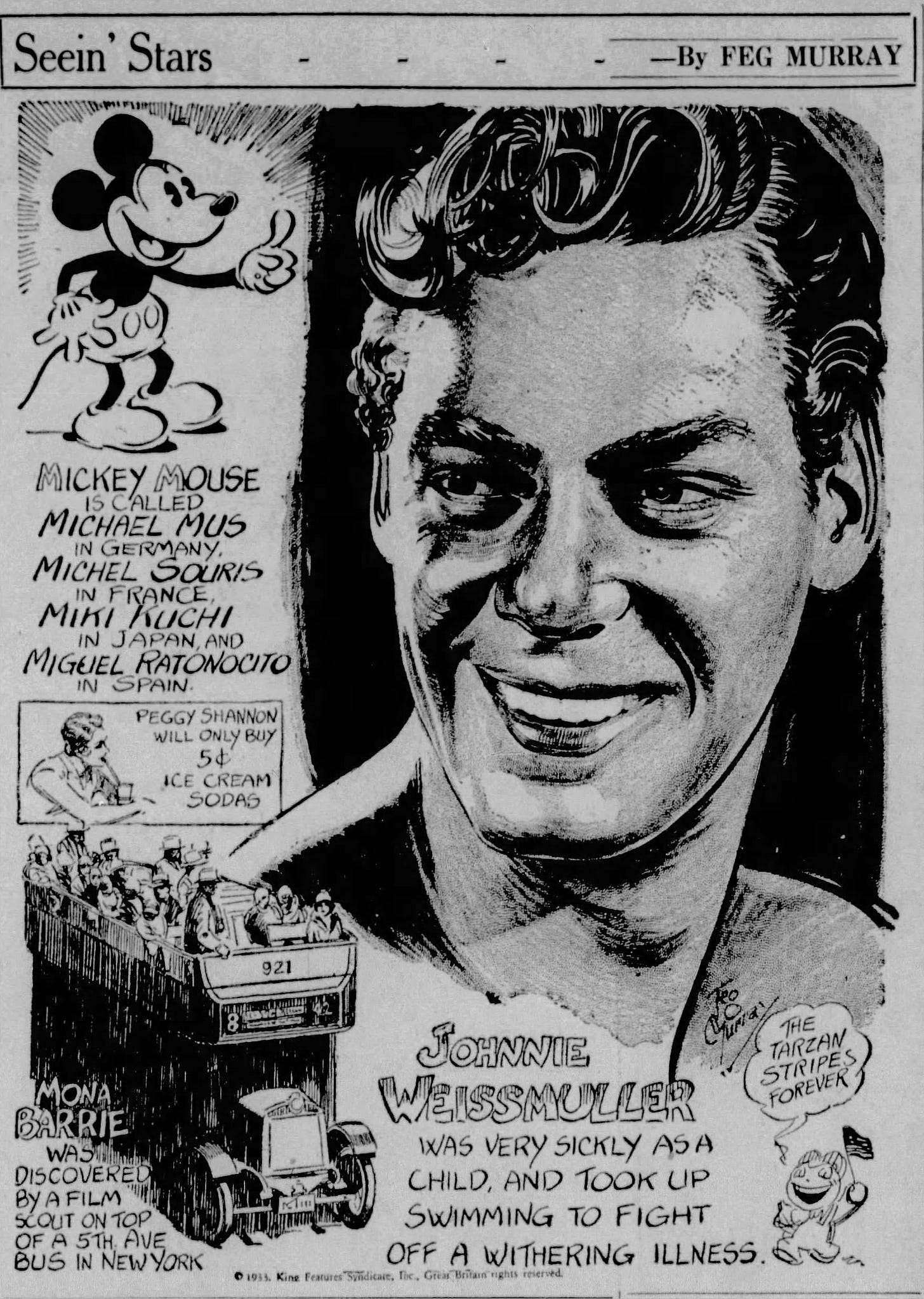
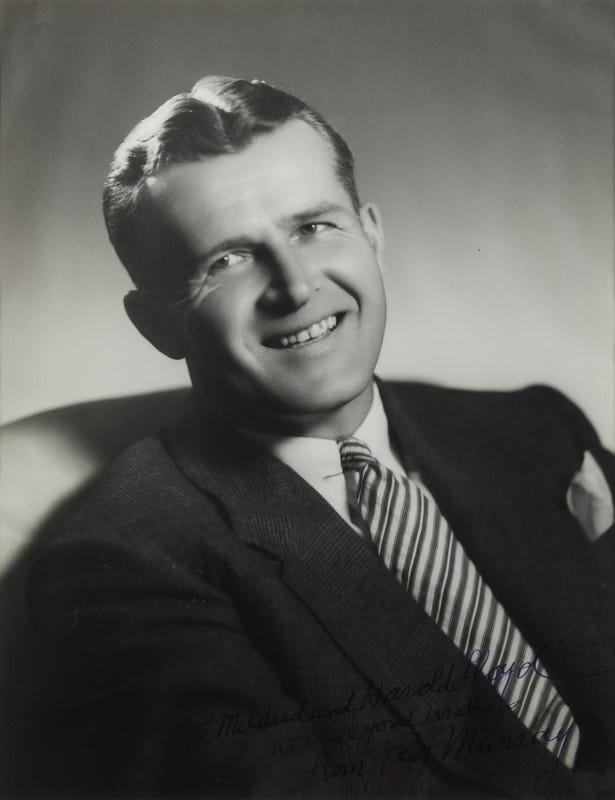
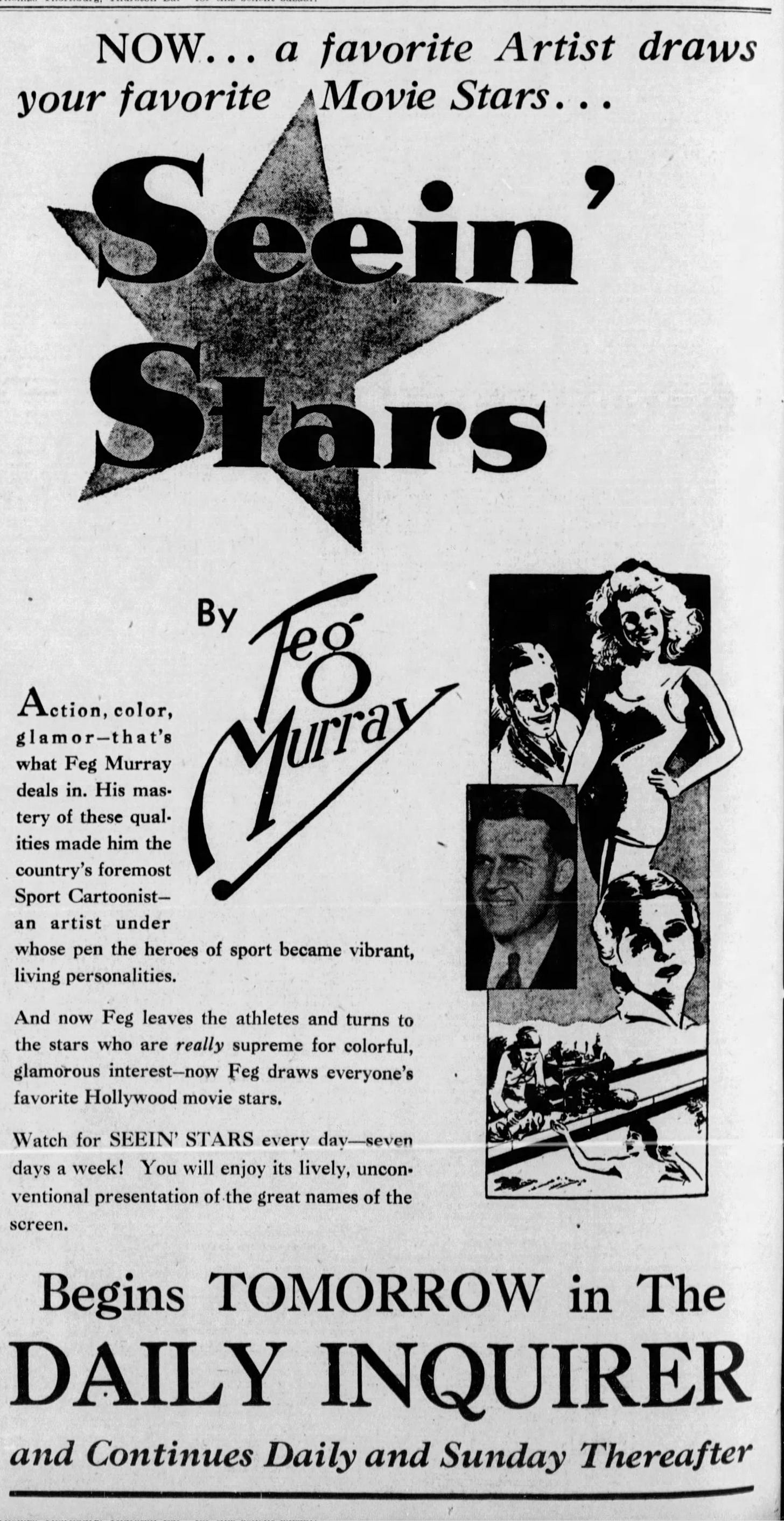

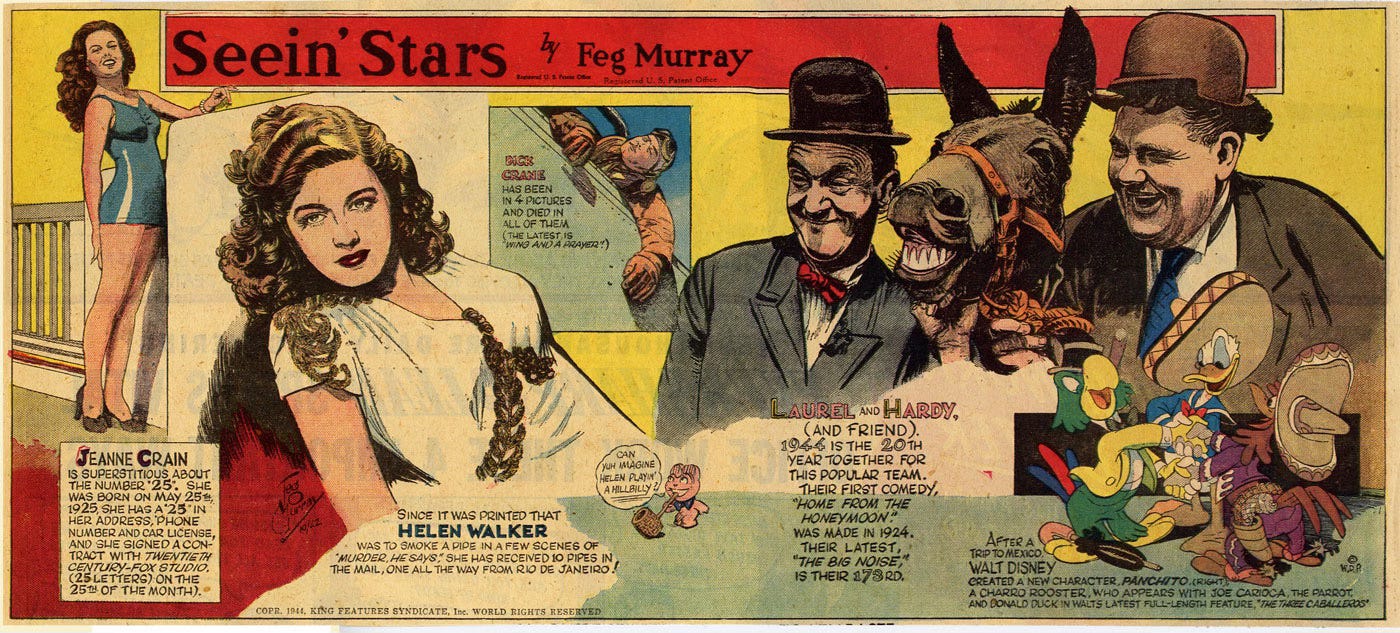



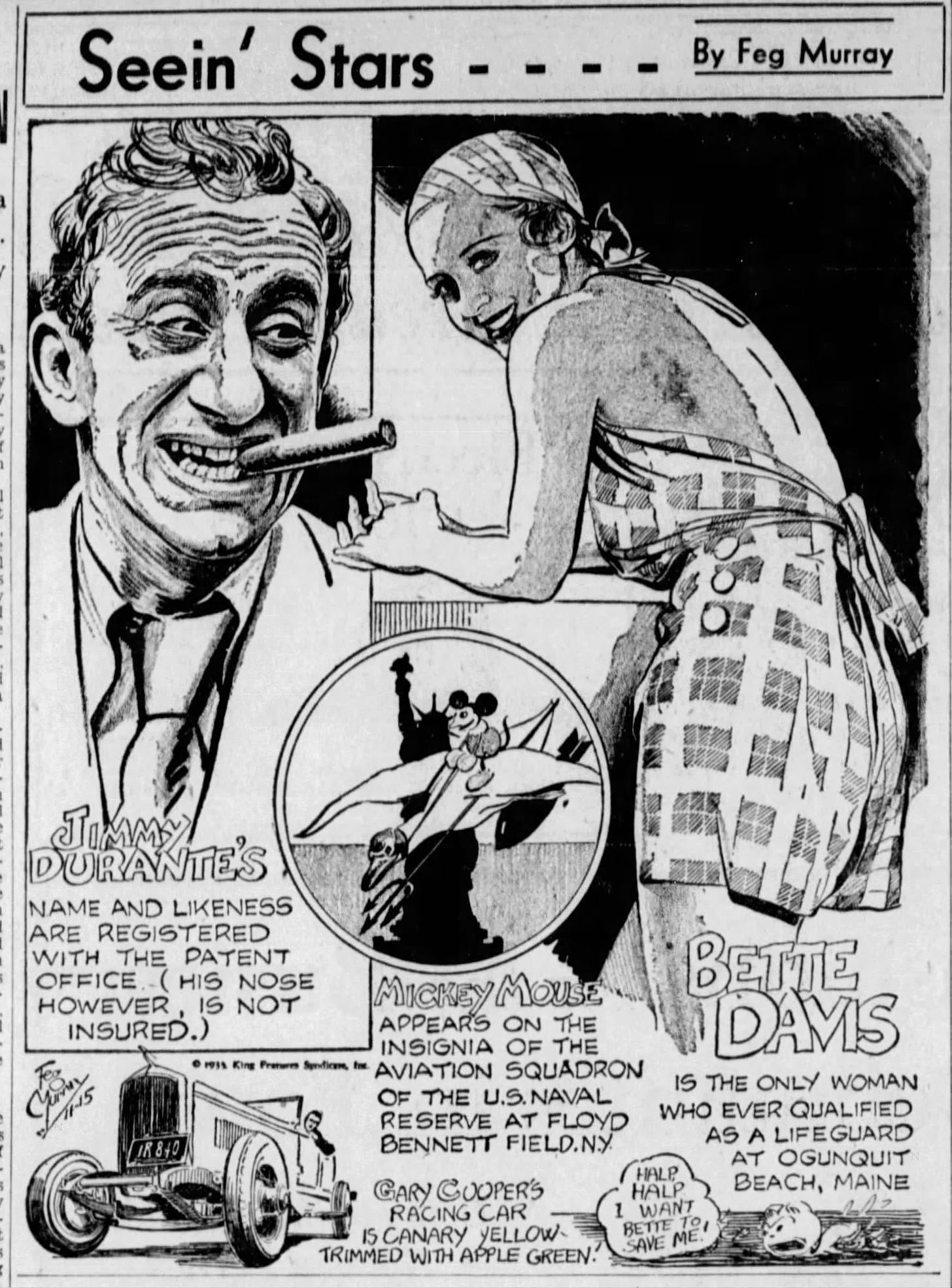
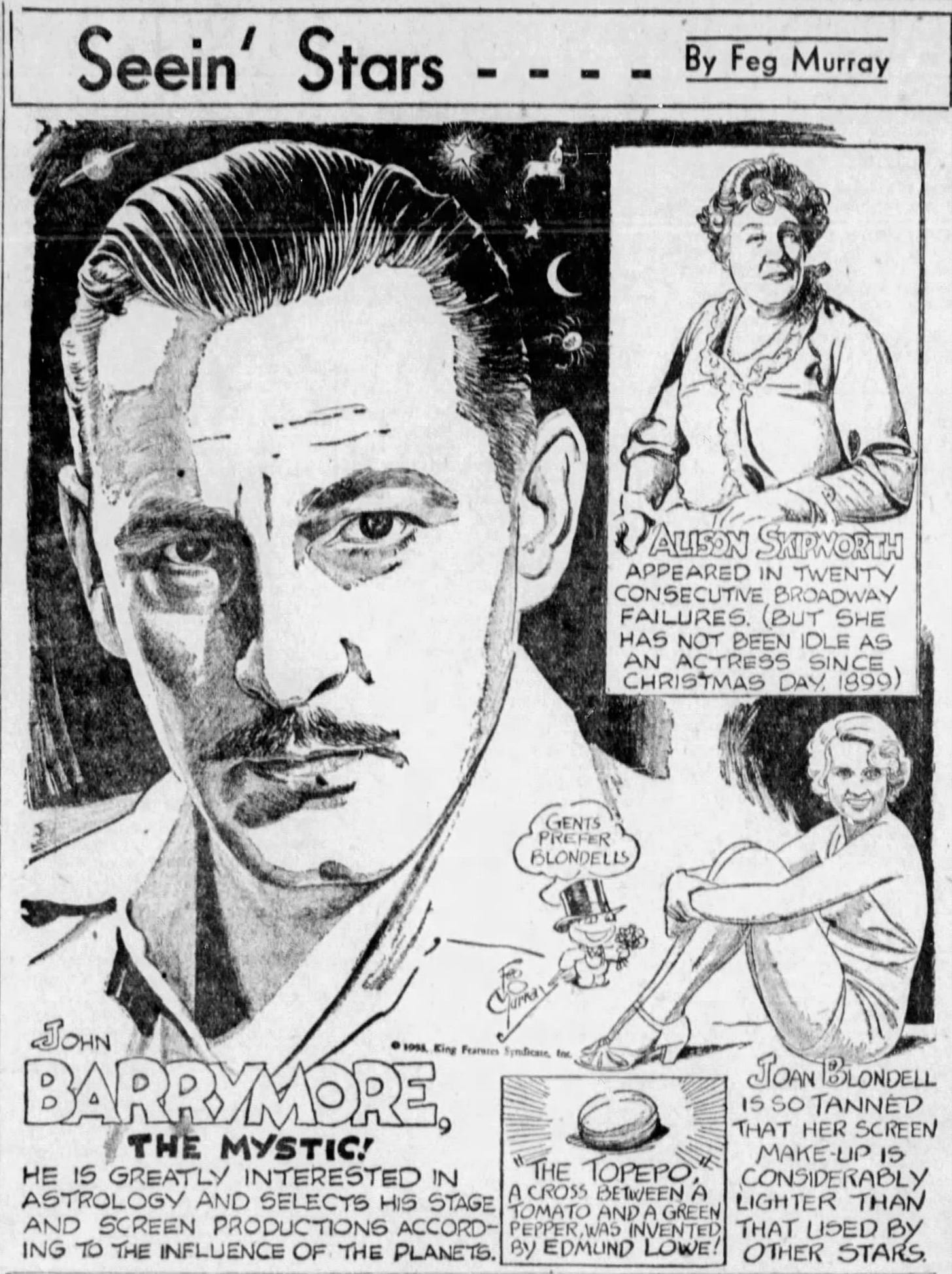
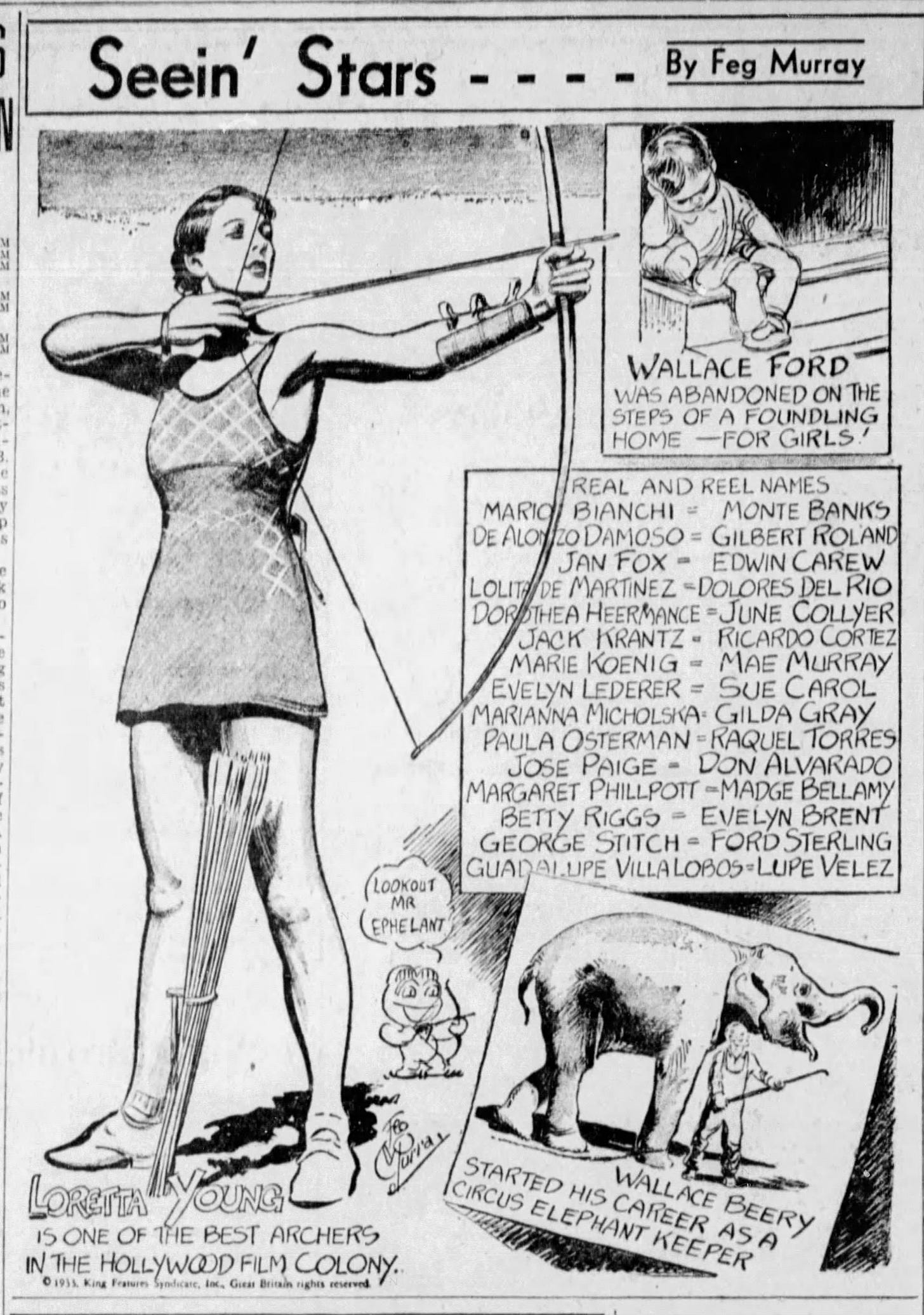


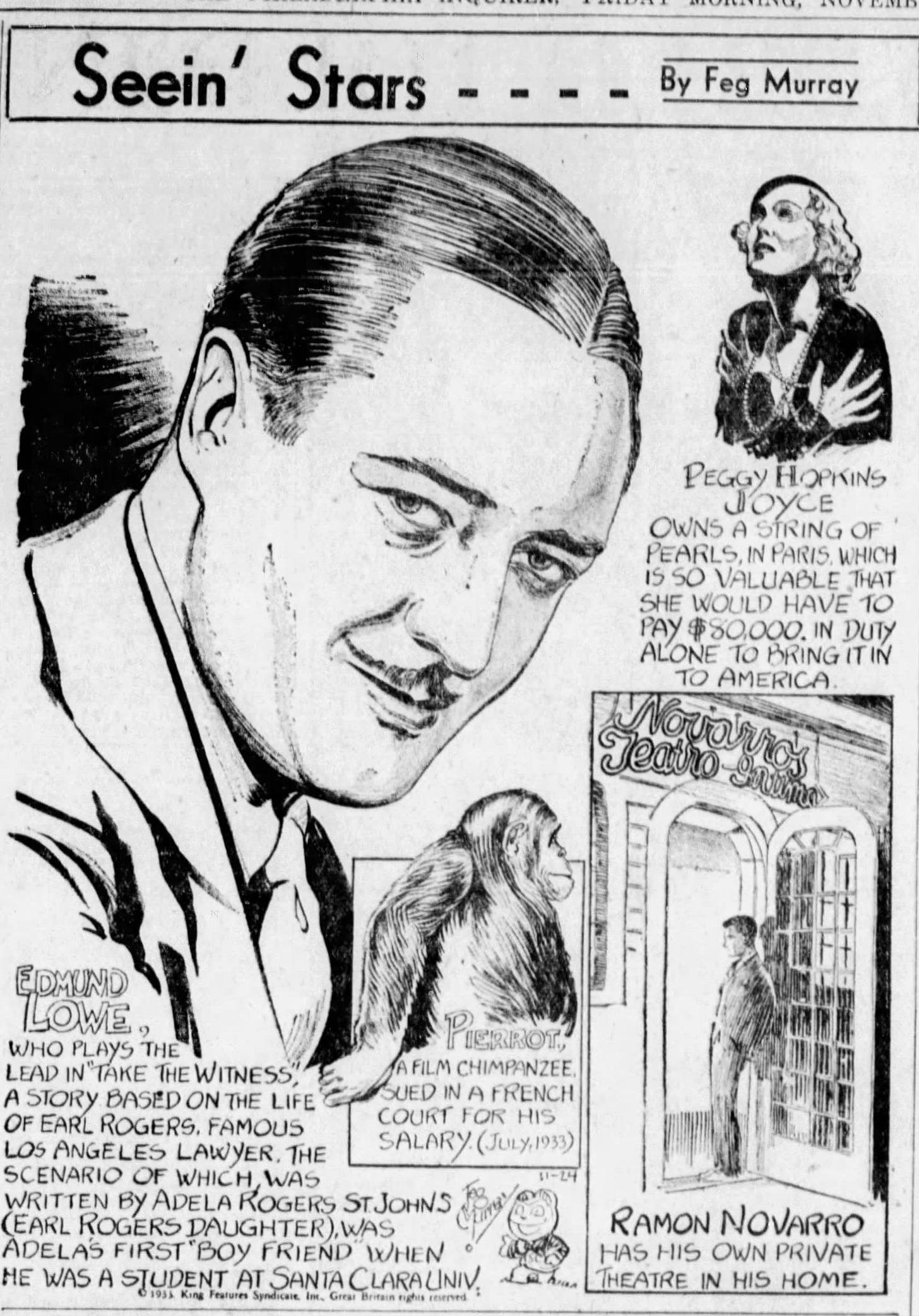

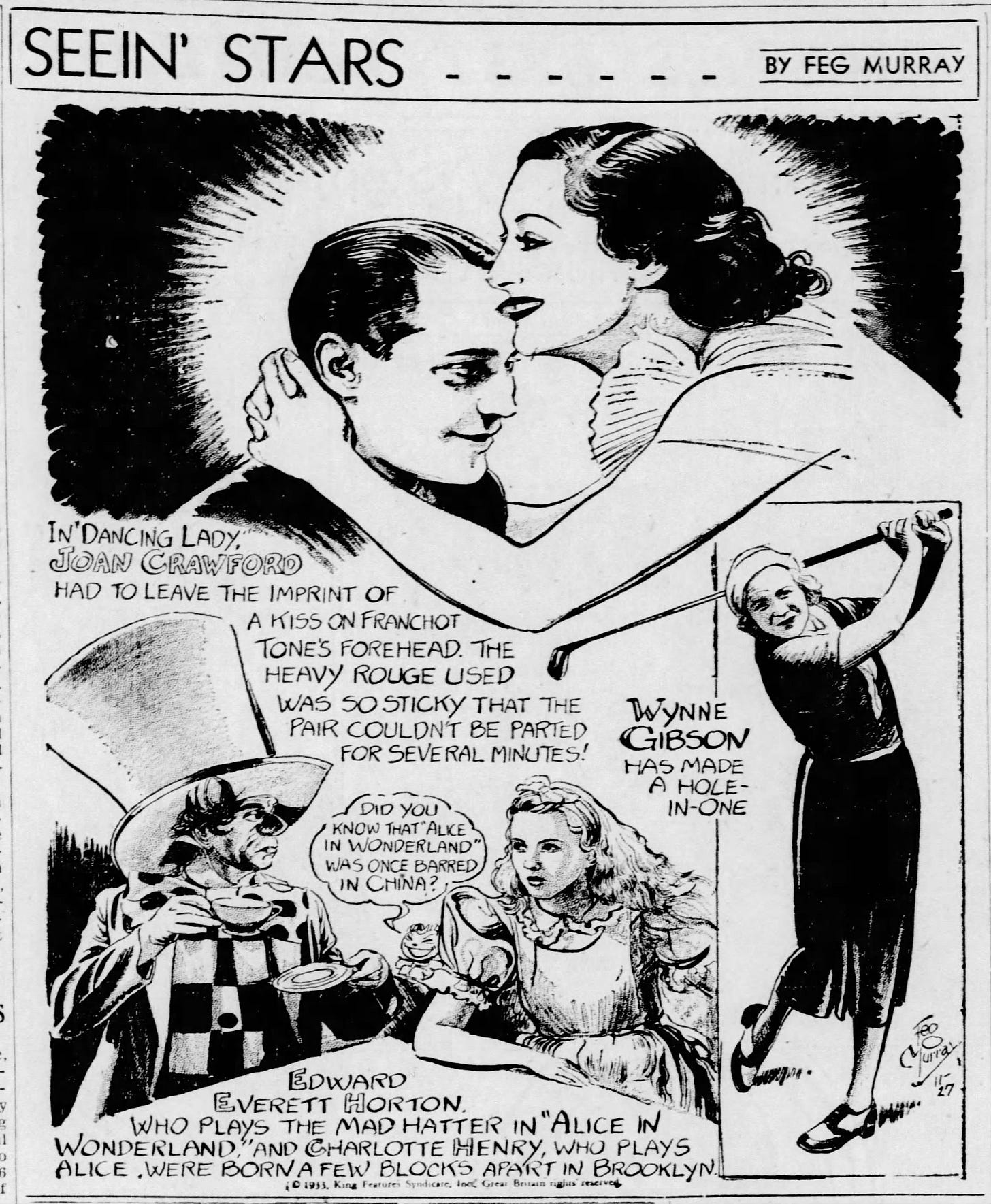

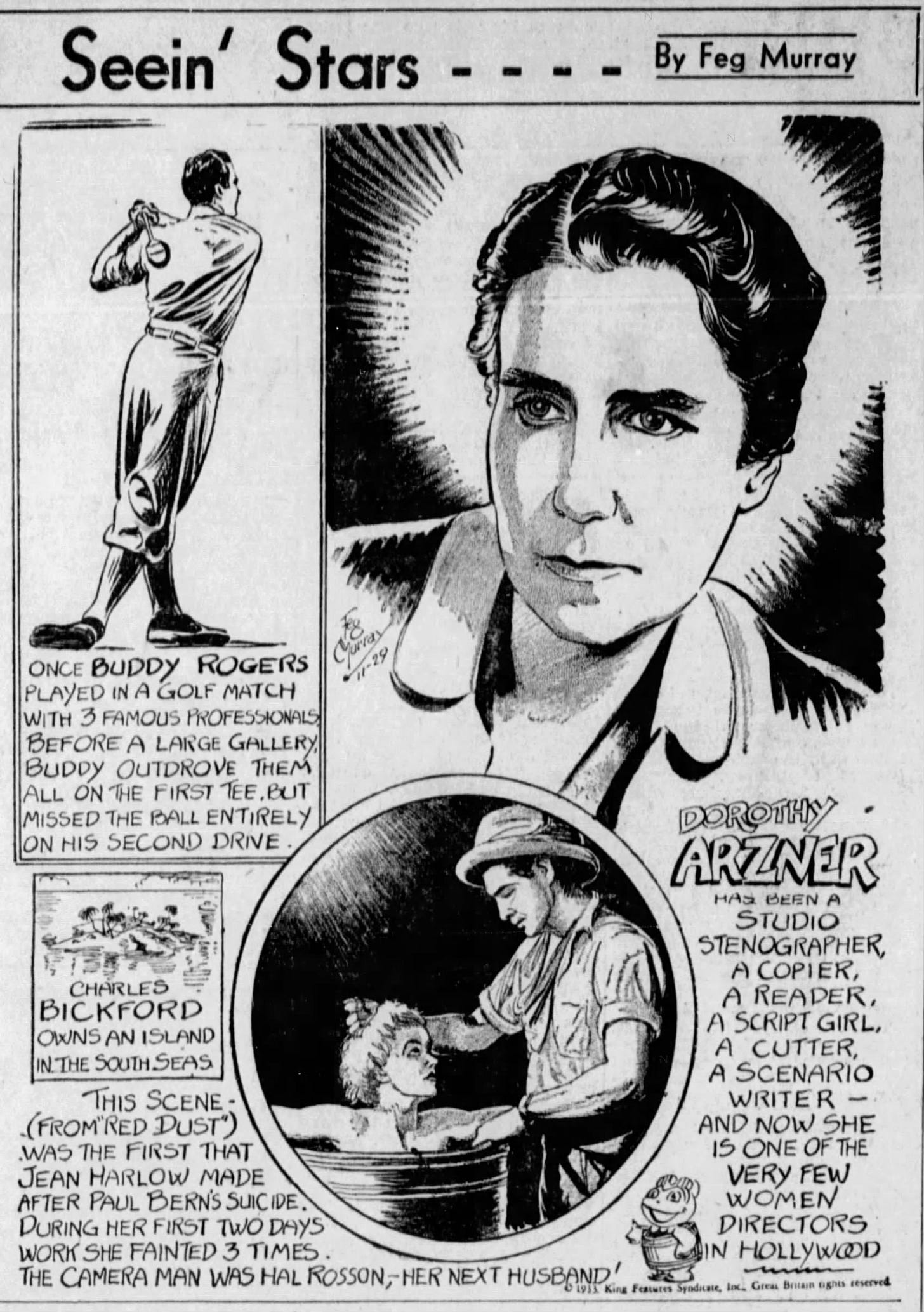

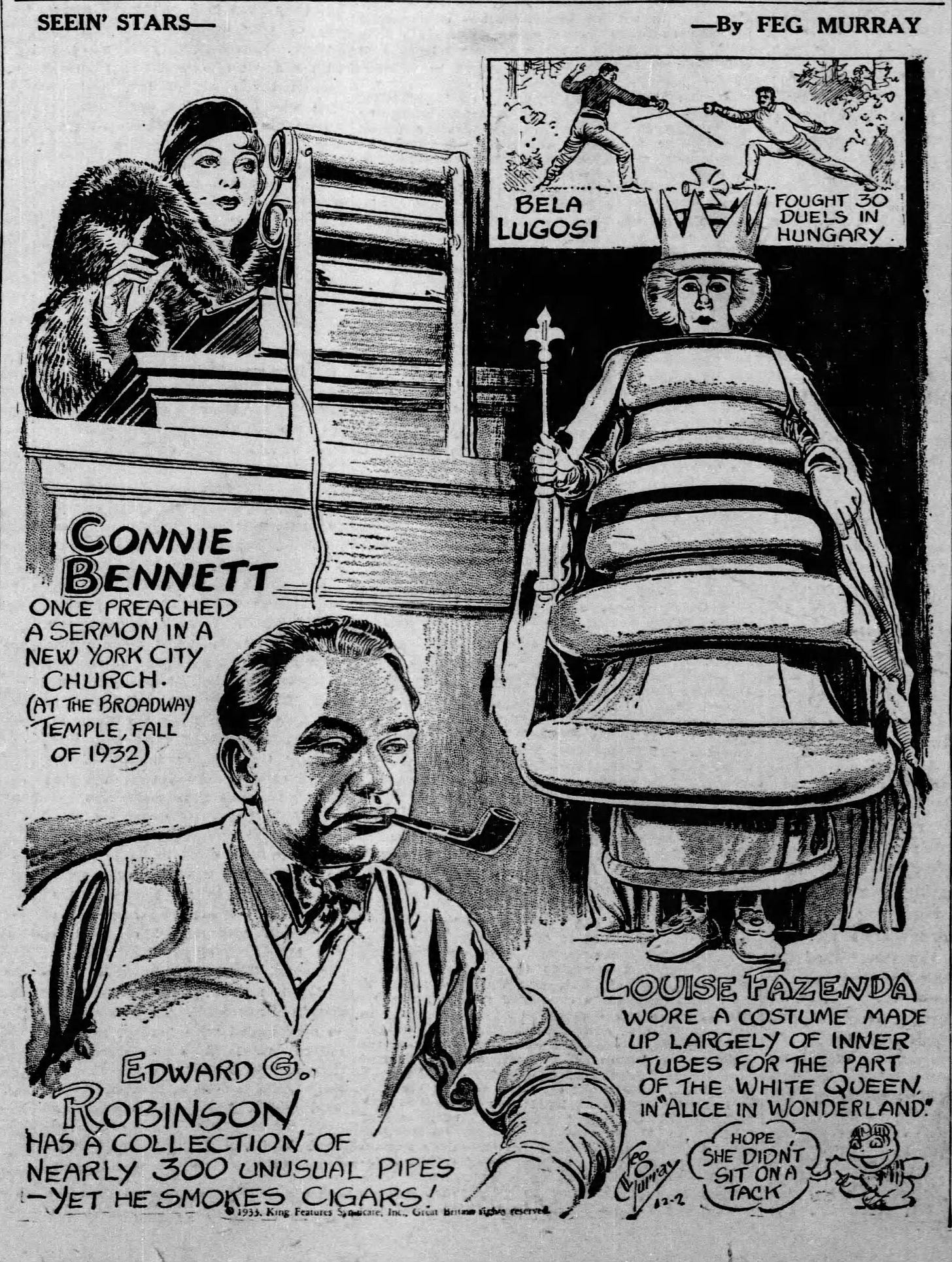
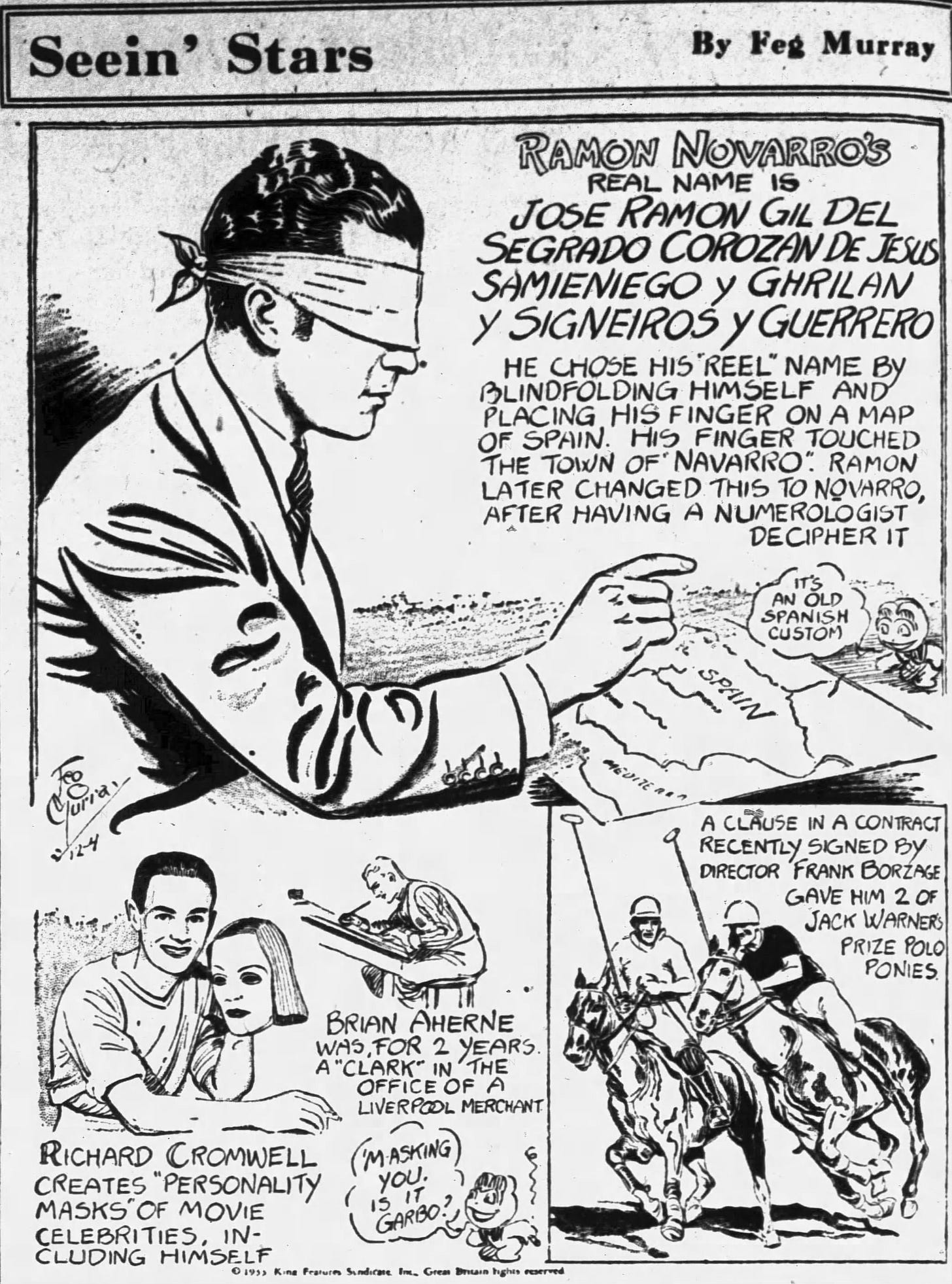

Those illustrations are so good.
I really enjoyed this.